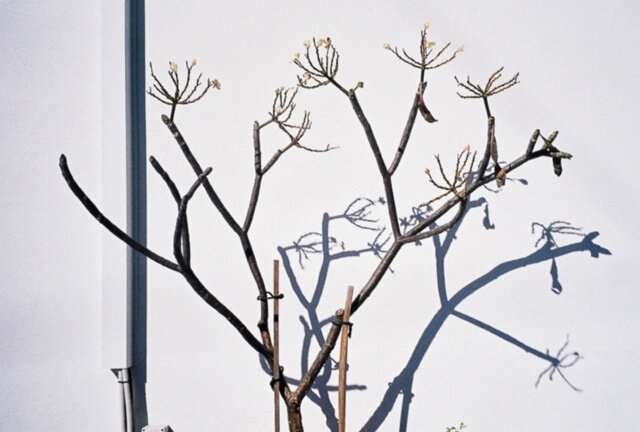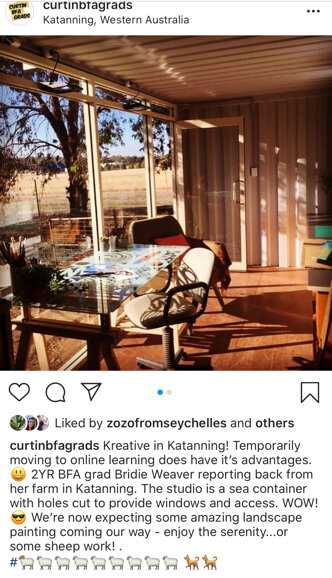By Associate Professor Nicole Slatter
For creative disciplines like fine art, it is often thought that the move to online teaching has been the biggest challenge in the era of the COVID-19 pandemic. Since Curtin University stopped face-to-face teaching on the 23 March, numerous colleagues from other disciplines in the university, as well as family acquaintances, have shared their opinion that “they can’t imagine how you could teach art online”. Putting aside my initial response, that in fact, Curtin has delivered the full art degree online for over 20 years through Open Universities Australia, attracting over 1000 new learners every year, there is no doubt the current situation compels art educators to consider both what they do and which parts of what they do, are essential to graduating successful contributors to the future of art. These art graduates will need to be able to contribute with integrity and a sense of social responsibility to a world in flux. The COVID-19 disruption has provided a significant opportunity for reflection; to consider these questions of what and why, that will define the post COVID-19 art school.

Figure 1 Kate Hulett @Impatientdeveloper, You gotta be good to me, Im gonna be good to you… 35mm film, 2020.
Prior to the removal of access to familiar learning environments and teaching practice, discussions with colleagues about the importance of the what and why, led to a common strategy and direction. It was integral to provide support to individuals who choose a creative future, to foster and enable their own ways to communicate and contribute. This support is perhaps rendered more important in these times when futures are less certain. Successful art schools achieve this, by providing unreserved support, space and materials to test ideas (however radical) and by providing a critical discourse with contemporaries in the discipline.
Art at Curtin consistently excels at this, not just because of the award-winning artists and educators on staff but because of the shared understanding that staff care about encouraging and developing students. As educators, staff aim to embrace all forms of art practice and expect it to always be an interesting challenge.

Figure 2 Curtin Bachelor of Fine Art Grad @curtinbfagrads. “Photo of Katanning Art Studio by Bridie Weaver.” Instagram, April 6, 2020. Accessed May 29, 2020. https://www.instagram.com/p/B-nwGdzDOqj/?igshid=ob8ep02vlkjh.
My role at Curtin as Dean of Learning of Teaching for the Faculty of Humanities has certainly been challenging in the rapid shift online and away from campus. The driving principle for teaching continuity during the COVID-19 pandemic has been to support people (staff and students) through a time of transition. Kindness first, acknowledging people cope differently in times of change especially, when facing unforeseen pressures, while also understanding that everyone is trying their best. As previously mentioned, humanities at Curtin has had plenty of experience with online learning, recently boasting the first fully accredited online architecture degree in the world through OUA, adding to a suite of others; preparedness that other institutions in this moment may have envied. The crucial difference in this shift to online was that the students and the staff embarking on this adventure, did not sign up for it.

Figure 3 Curtin Bachelor of Fine Art Grad @curtinbfagrads. “Photo of bedroom studio for sculpture by Effie Windberg.” Instagram, March 29, 2020. Accessed May 29, 2020. https://www.instagram.com/p/B-T8Ausj0Tb/?igshid=8lq7scyc1a99
Far from a matter of teaching the prepared OUA version of courses, staff and students, four weeks into the face-to-face teaching semester, needed to evolve this blended-learning environment together. There were impressive displays of comradery, sharing of solutions, communications, content, and technologies across schools, faculties, campuses and even institutions. Staff negotiating the distribution of synchronous and the asynchronous learning, social media, digital and analogue adaptations. Students and staff, had a go, used work-arounds, produced amazing learning exchanges and made a few errors. In good faith, mistakes were forgiven and learning moved forward. Changes made “in flight” to pivot and solve “in the moment” problems, reminded academic leaders that courses had lost forms of agility that art school curricula once had. This same ability to think and act with agility is something art educators would insist on from their art students. Surely this same agility is a crucial attribute for the development and decision making for course delivery and learning environments. There is no doubt that staff and students adapted creatively and found innovative solutions to practical and group learning through new forms of communication, simulation and technology. Many have reported the benefits. Still it is worth noting that the same students are asking to come back to campus and re-engage with on-campus studio learning.
The challenge now has become more complex, including supporting students unable to attend campus due to health or travel restrictions, while at the same time providing engaging learning environments for students who choose an art school on-campus education. Despite the success of the dynamic learning and teaching online experience, many students still prefer the social, physical connection to the studio and the art school. The next focus in art school curricula planning is to provide support through the blending of online and face-to-face modes.
These concerns are increasingly more crucial at a time when tertiary art education strives to provide the discipline of art’s rigour, while offering varied pace and delivery modes to capture the attention of a contemporary audience. Art academics and art students are resilient, agile and supportive and should continue to keep these attributes front-of-mind when approaching new learning environments.
Associate Professor Nicole Slatter is a visual artist and an academic living in Perth, Western Australia. Nicole is currently the Dean of Learning and Teaching for the Faculty of Humanities at Curtin University.